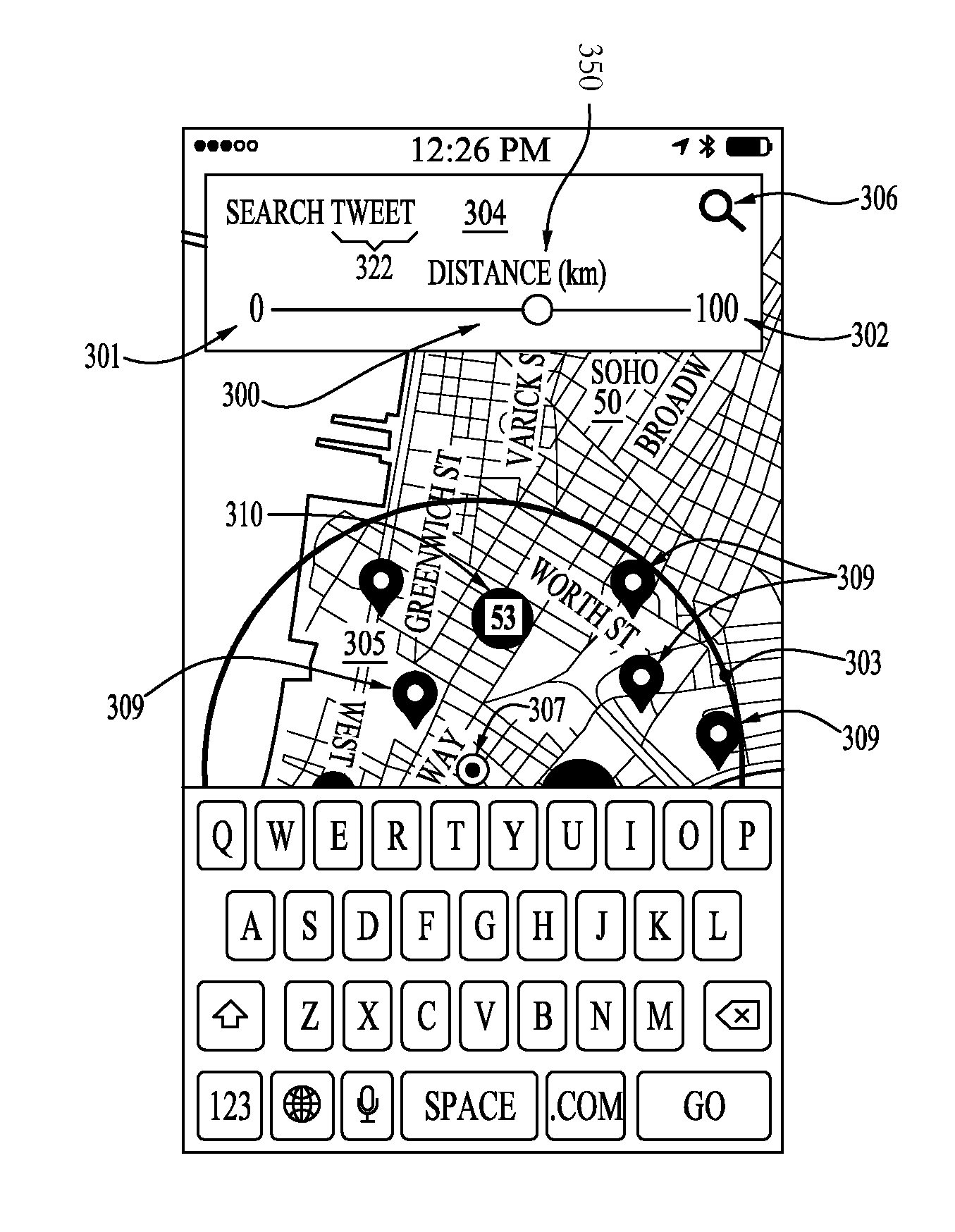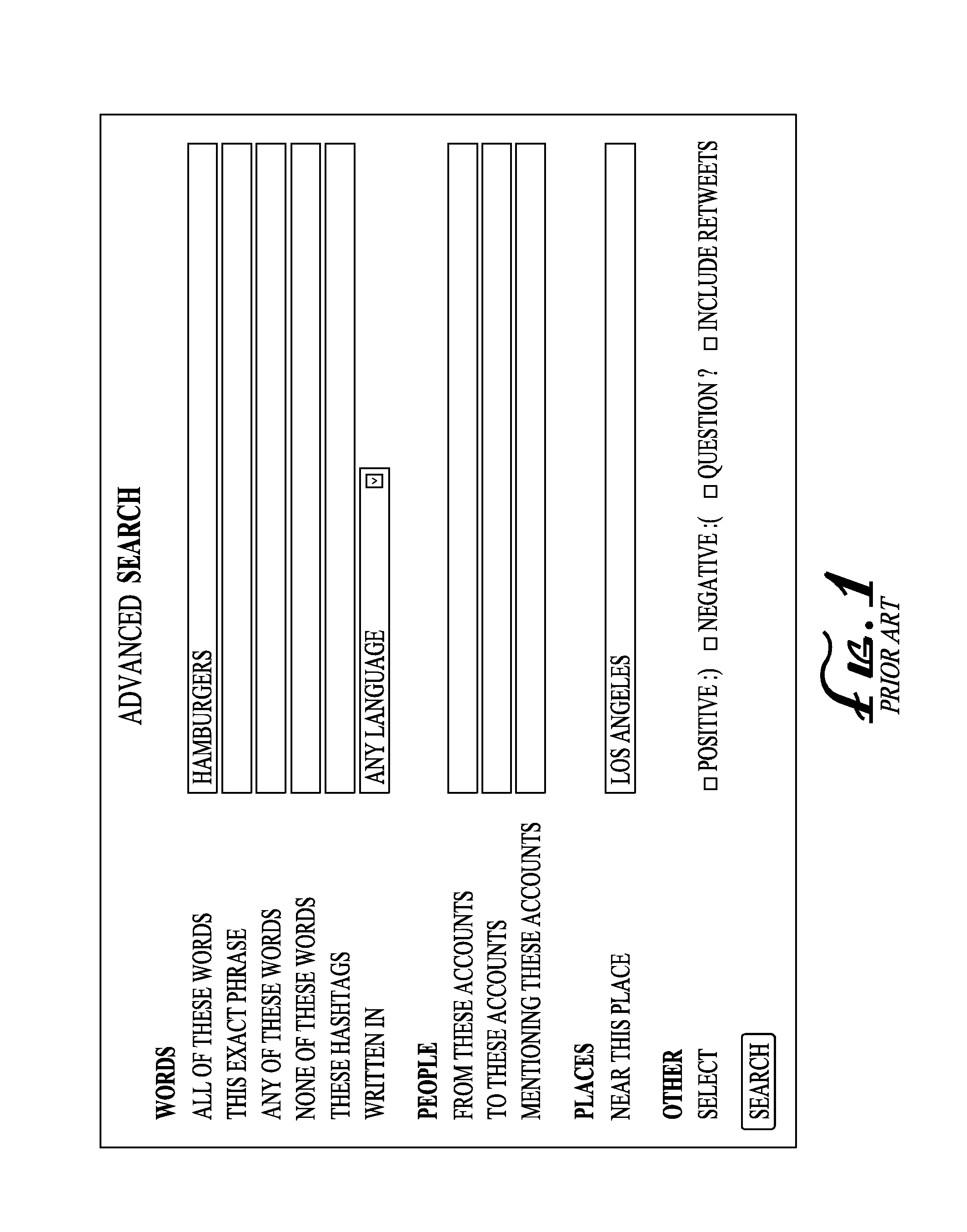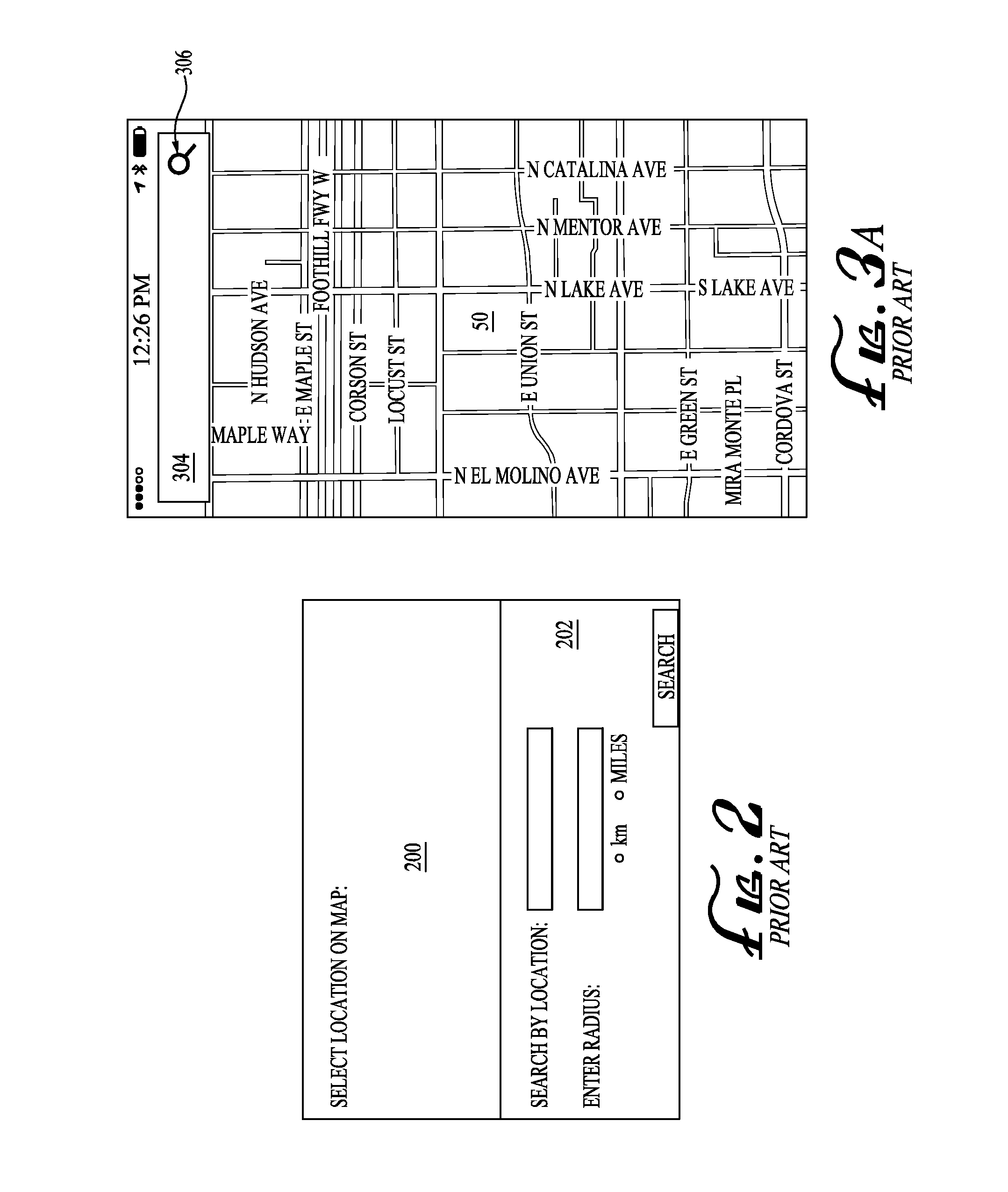Map-based remarks
a map and comment technology, applied in the field of maps and publishing tools, can solve the problems of inability to teach or fairly suggest a streamlined publishing system, inability to significantly modify a map image, and limited social media sharing, etc., to achieve simple steps, easy-to-use posting, and streamlined publishing
- Summary
- Abstract
- Description
- Claims
- Application Information
AI Technical Summary
Benefits of technology
Problems solved by technology
Method used
Image
Examples
Embodiment Construction
[0031]As used herein, the following terms are defined as follows:
[0032]The term “geopost” can refer to posting of information or metadata, including but not limited to any of the following: location, area, region, map, coordinates, position, or any combination thereof, relative or absolute, now known or future developed.
[0033]The term “geosearch” can refer to searching of information or metadata, including but not limited to any of the following: location, area, region, map, coordinates, position, or any combination thereof, relative or absolute, now known or future developed.
[0034]The term “geotag” can refer to the inclusion of geographical information along with any other information or metadata, including but not limited to any of the following: location, area, region, map, coordinates, position, or any combination thereof, relative or absolute, now known or future developed.
[0035]The term “select-and-drag” can refer to touch-and-drag on a touchscreen, click-and-drag on a mouse o...
PUM
 Login to View More
Login to View More Abstract
Description
Claims
Application Information
 Login to View More
Login to View More - R&D
- Intellectual Property
- Life Sciences
- Materials
- Tech Scout
- Unparalleled Data Quality
- Higher Quality Content
- 60% Fewer Hallucinations
Browse by: Latest US Patents, China's latest patents, Technical Efficacy Thesaurus, Application Domain, Technology Topic, Popular Technical Reports.
© 2025 PatSnap. All rights reserved.Legal|Privacy policy|Modern Slavery Act Transparency Statement|Sitemap|About US| Contact US: help@patsnap.com



